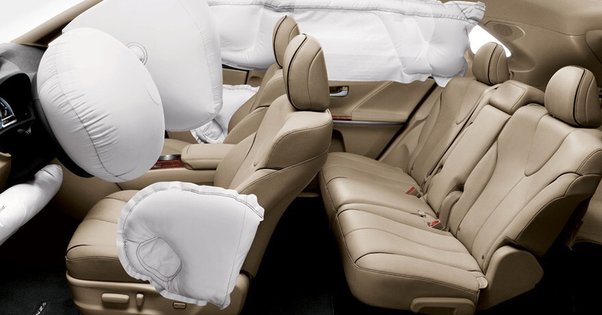Car seat & curtain airbags are two types of airbags that are designed to protect occupants in the event of a collision.
Car seat airbags are located in the front and rear seats of the vehicle and are designed to protect the occupant's torso and head. They deploy within milliseconds of an impact, providing a cushion of protection for the occupant.
Curtain airbags are located in the roof of the vehicle and are designed to protect the occupant's head in the event of a side impact or rollover. They deploy downward and cover the windows, protecting the occupant from flying glass and other debris.
Both car seat and curtain airbags are important safety features in modern vehicles. They can help to reduce the risk of injury or death in the event of a collision.
Call Us: (571) 417-5717Seat and curtain airbags are integral components of a vehicle's safety system, designed to offer extensive protection to occupants during a collision. While seat airbags are embedded in the seats to protect the torso and pelvis, curtain airbags deploy from the roof to shield the head and neck. This comprehensive guide explores the functionality, benefits, types, maintenance, and considerations related to seat and curtain airbags, emphasizing their critical role in enhancing passenger safety.
Seat Airbags - Seat airbags, also known as side airbags, are installed within the seatbacks or sides of the seats. Their primary function is to protect the torso, pelvis, and sometimes the head of occupants during a side-impact collision. These airbags are designed to inflate rapidly, creating a buffer between the occupant and the intruding vehicle structure or other objects.
Curtain Airbags - Curtain airbags, also known as side-curtain airbags, are located along the roofline of the vehicle, typically running from the front to the rear seats. These airbags deploy downward like a curtain during a side-impact collision or rollover, covering the windows to protect occupants' heads and necks from impact with the vehicle's interior or external objects.

Activation Mechanism - Both seat and curtain airbags are part of the vehicle's overall airbag system. Sensors positioned throughout the vehicle detect the force and direction of an impact. When a side-impact collision or rollover is detected, these sensors send a signal to the airbag control unit, which triggers the deployment of the airbags.
Deployment Process - The deployment process for seat and curtain airbags involves several key steps:
Standard Seat Airbags - Standard seat airbags are typically installed in the seatbacks or sides of the front seats. They provide essential protection for the torso and pelvis during side-impact collisions.
Thorax-Pelvis Airbags - These advanced seat airbags offer additional protection by covering both the thorax and pelvis areas. They are designed to provide a larger coverage area and are often found in high-end vehicle models.
Standard Curtain Airbags - Standard curtain airbags cover the windows along the sides of the vehicle, from the A-pillar to the C-pillar. They are designed to protect the heads of front and rear seat occupants during side collisions and rollovers.
Extended Curtain Airbags - Extended curtain airbags provide additional coverage, sometimes extending to the D-pillar in larger vehicles like SUVs and minivans. This extended coverage offers enhanced protection for all occupants, including those in the third-row seats.
Enhanced Side-Impact Protection - The primary benefit of seat and curtain airbags is the enhanced protection they provide during side-impact collisions. By cushioning the torso, pelvis, head, and neck, these airbags significantly reduce the risk of serious injuries.
Comprehensive Occupant Safety - Seat and curtain airbags work in conjunction with front airbags and other safety systems to provide comprehensive protection. This multi-layered approach ensures that all parts of the body are shielded from impact forces, improving overall occupant safety.
Reduced Risk of Ejection - During a rollover accident, curtain airbags help to keep occupants inside the vehicle by covering the windows and preventing ejection. This added protection is crucial for reducing the severity of injuries in such events.
Improved Safety Ratings - Vehicles equipped with seat and curtain airbags often receive higher safety ratings from organizations like the National Highway Traffic Safety Administration (NHTSA) and the Insurance Institute for Highway Safety (IIHS). These ratings reflect the increased level of protection offered by these advanced safety features.